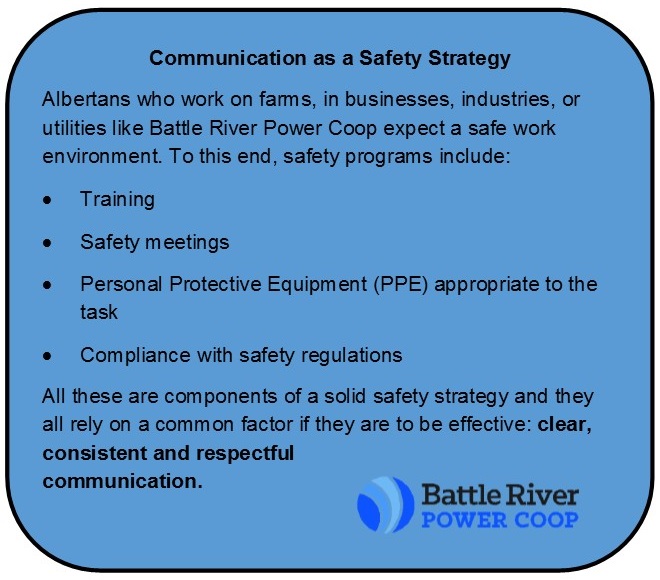Albertans who work on farms, in businesses, industries, or utilities like Battle River Power Coop expect a safe work environment. To achieve this end, appropriate training is provided, safety meetings are held, personal protective equipment (PPE) is provided and used, and safety regulations are observed. All these are components of a solid safety strategy and they all rely on a common factor if they are to be effective: clear, consistent and respectful communication.
A deceptively simple definition of communication is “the exchange of information”. This gets more complicated with a closer look. Words often have different meanings to different people, and sometimes additional information or an alternate explanation may be needed. A foreman giving directions might believe that a task is crystal clear while a new worker may only digest a fraction of the instructions. A good communicator will ask questions to be sure the task is understood before work begins.
Communication can be verbal, written, face-to-face, or electronic. Some experts estimate that 70% of communication is non-verbal, conveyed through body language, eye contact, voice tone and facial expressions. Since facial expressions cannot be observed via email, extra care should be taken with electronic communication.
Responsibility for clear communication is shared by everyone. An employer or foreman will be the person giving directions, but employees must take the initiative to ask for clarification when needed. Questions should be understood as learning opportunities and a sign that workers are invested in the task, and they deserve clear, respectful answers.
Listening is just as important to communication as speaking, and just as active. Listening well helps to build relationships. Rapport between workers engaged in a common task and between employers and employees circles back to clear communication.
In any workplace, and especially in occupations that contain inherent risk, like farming or electricity distribution, effective communication may be the difference that prevents an injury incident. Good communication fosters a workplace where people trust one another and feel valued. It encourages an attitude of involvement that carries over into all aspects of the business. It’s well worth the time and effort.


